
Will an AR foregrip or handstop improve your shooting performance? Do they offer any additional benefits? If so, which are the best models to get?
After optics, weapon lights and slings, accessories that increase support-hand control are some of the most common upgrades installed on America’s favorite rifle.
Some use them because they believe they improve their shooting, while others of course install them purely for customization’s sake, but what advantages do they truly offer?
Let’s go over what potential benefits an AR foregrip has to provide, how they’re used and finally the best foregrip and handstop models available right now.
Why Did Anyone Use Foregrips?
Historically, foregrips have been used to control full-auto fire in compact automatic weapons.
The bulk of that lineage comes from submachine guns, and the original Thompson is a classic example.
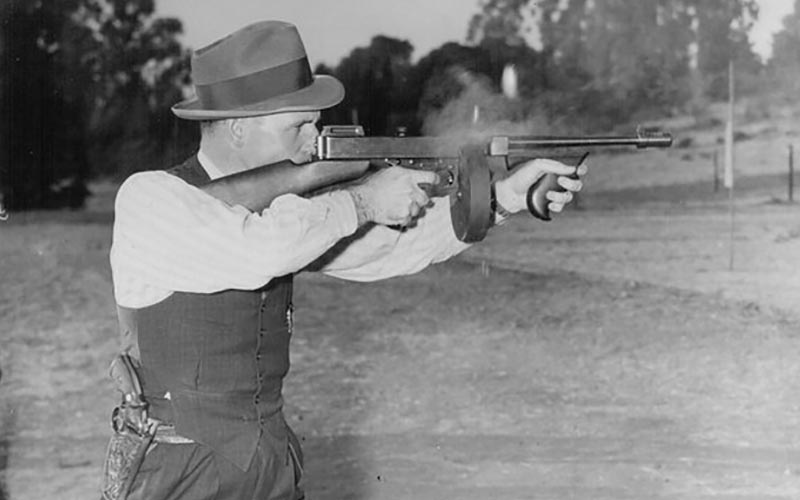
Later submachine guns would either have foregrips as a standard feature or were designed to be gripped by the magazine well, effectively functioning as a foregrip. That was a common design feature of SMGs starting around World War II, with examples including the German MP40, the M3 Grease Gun and the Soviet PPS-43 to name a few.
Foregrips were also somewhat common on light machine guns such as the Chauchat, Bren and Hotckiss M1922, and there's some evidence that vertical foregrips were occasionally attached to some BARs in the field.
Forward pistol grips wouldn't start to be featured on service rifles until much later, after intermediate-caliber select-fire rifles became the norm.
When Did AR Foregrips Come Into The Picture?
AR-15 foregrips in particular have been in use almost as long as the rifle itself. The earliest examples were jerry-rigged in the Vietnam War, usually an A1-pattern pistol grip bolted to the handguard of a CAR-15.
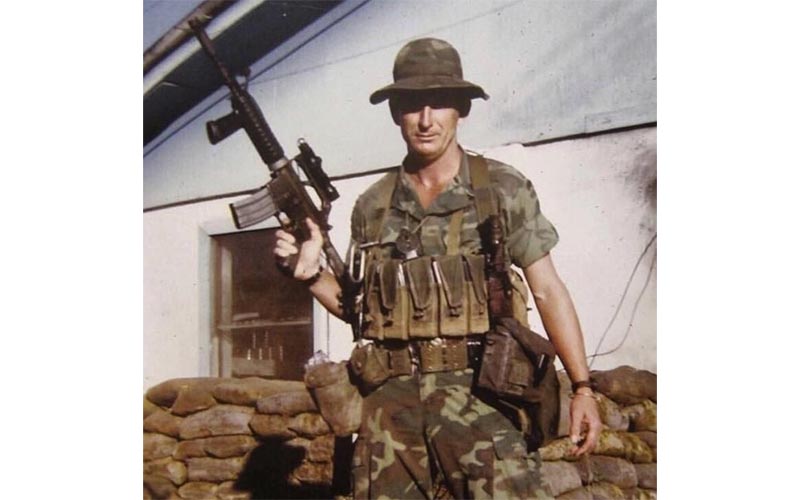
The CAR-15, of course, was developed to serve as an ersatz submachine gun as well as a short carbine, so the idea fits right into the classic use case for foregrips.
More official AR foregrip designs were later developed commercially to bolt directly to the holes of an A2-pattern handguard (again, being more common for the CAR-15) and–during the GWOT (Global War on Terrorism)—to quad-rail handguards of the modern M4 carbine and M16A4 rifle.
The first model to start hitting commercial production in any quantity was the VFG developed by Knight's Armament, often called the “broomstick” grip, and later the Grip Pod, a vertical grip with a spring-loaded bipod inside of it.
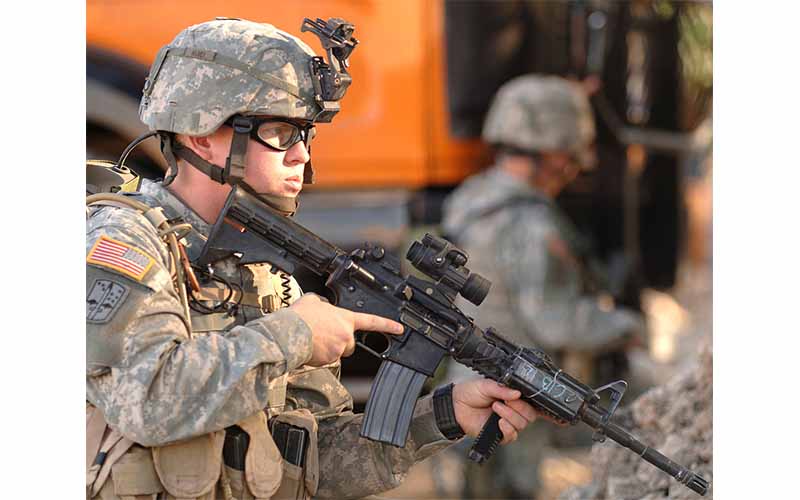
What's The Difference Between A Foregrip And A Handstop?
While both ostensibly provide extra stability and control, foregrips and handstops are different.
In the simplest terms, a foregrip is a handguard accessory that was designed to be fully grasped by a hand. The shooter can then use the grip as an extra point of contact for pulling the rifle back into the shoulder for the sake of stability.
Handstops, on the other hand, are a bit more varied in their form and how they are used. Depending on who you ask or the exact model in question, handstops are designed to assist in either pulling the rifle back into your shoulder or pushing it forward. The latter style is sometimes called a finger stop as well.
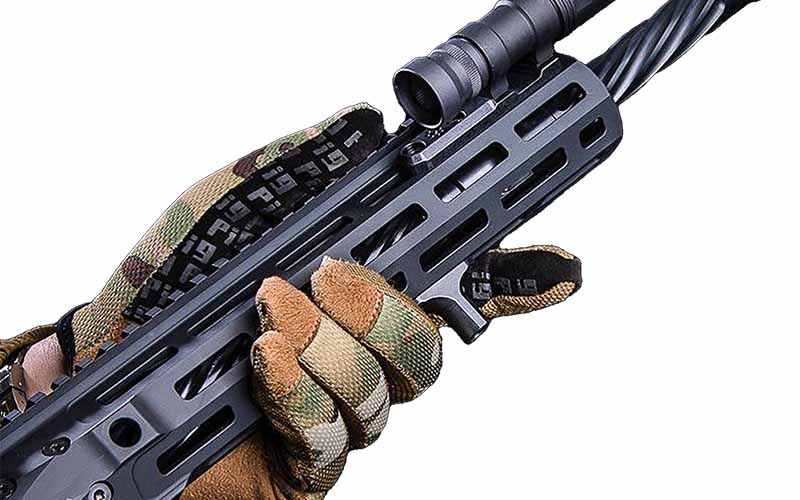
When pulling back on a handstop, it works much in the same way as a foregrip. When pushing forward on it, the stop can also prevent the user’s fingers from getting too close to the muzzle. In either configuration, these accessories can be used as a barrier stop as well.
Something of a middle ground between the traditional broomstick and the angled grips/handstops is the stubby grip, which gives you a little of both. Shooters who use these tend to cup the grip and the handguard. This is preferred by some shooters who use the C-clamp grip or who use top-mounted tape switches.
Foregrips can be vertical—such as the classic broomstick—or can be angled, like that of the Thompson SMG or the Magpul AFG of today. Handstops are much lower profile in comparison.
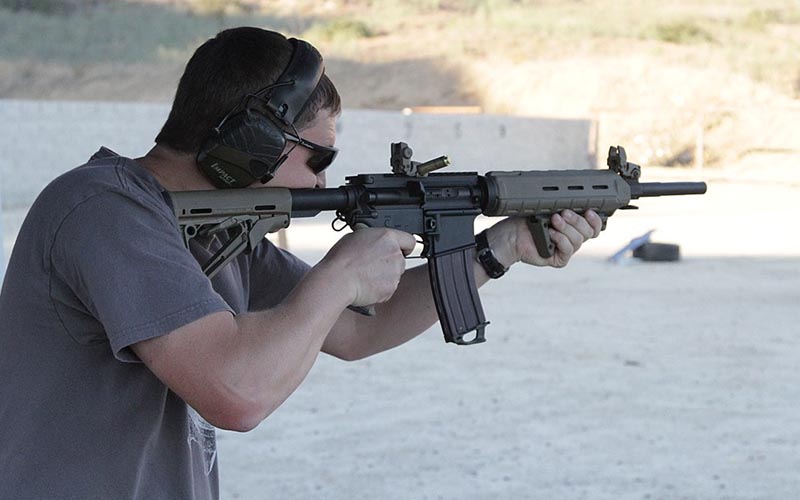
The principle difference is that a foregrip changes how your support hand grips the gun, either in a vertical or an angled position, whereas a handstop tends to enhance a more traditional grasp of the rifle and provides a physical index of where to grip the handguard.
Do AR Foregrips Have Any Real Benefits?
On paper, foregrips and handstops should give a person additional leverage that allows for greater control of the rifle.
Some research indicates that grip strength decreases with wrist flexion, or in other words, you have less grip strength the more you bend your wrist.
In reality, it's not that simple.
For one, shotgunners have been using body mechanics to manage recoil without using foregrips for a very long time. Grip angle has long been a debate amongst pistol shooters as well, but it's hardly kept Shane Coley, Bob Vogel and others from winning national and world pistol titles shooting Glocks.
Probably the most conclusive findings regarding the efficacy of AR foregrips are from an article published by the Army Research Laboratory in 2015. The study had military and police personnel participate in different drills where their performance was measured, each course ran both with and without a foregrip attached to their M4.

Despite many participants claiming that they preferred the feel of using the foregrip, no discernable difference in performance was measured. Whether they were firing the CQB course or the long-range course, the use of a foregrip had no impact on accuracy, shot speed or recoil control.
These results are reinforced by the fact that top-level 3-gun and 2-gun shooters rarely employ vertical foregrips, often eschewing them for handstops or just grasping the handguard.
In other words, AR foregrips are a matter of the shooter's preference. Installing one probably won’t increase your shooting abilities, but it probably won’t hinder them either.
That said, just because a foregrip won’t make you a more accurate or faster shooter, it doesn’t mean they don’t have some additional benefits you can take advantage of. As previously mentioned, some foregrips and handstops can also be used as barrier stops, and a vertical foregrip can be used as a monopod in some instances as well.
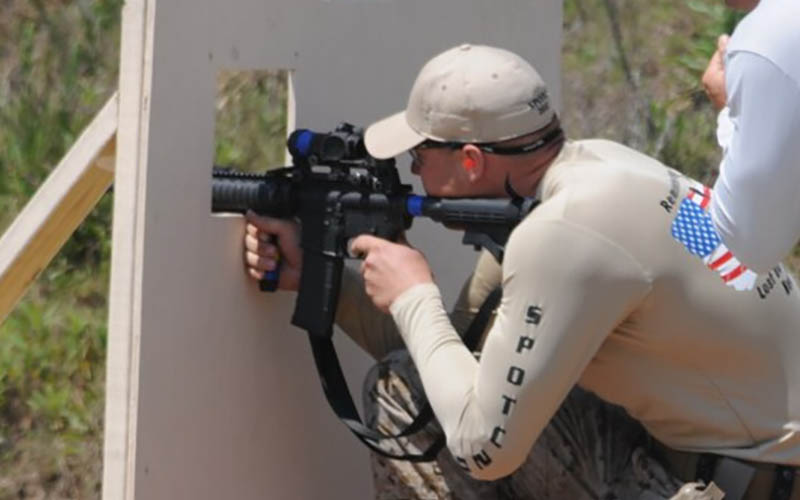
Another aspect to consider is that a vertical grip gets the hand away from the handguard, which can get hot enough to cause minor burns with a heavy enough firing schedule or in the right environment.
So, should you put a foregrip on your AR? It’s completely up to you. There are essentially no downsides besides the added bulk, and they do have some benefits even if they won’t necessarily improve your shooting performance. If you prefer the feel of one over a bare handguard, then by gosh, use one. Just keep in mind that if you choose to, you will still be able to run your rifle just as well without it.
The 7 Best AR Foregrips
Magpul AFG
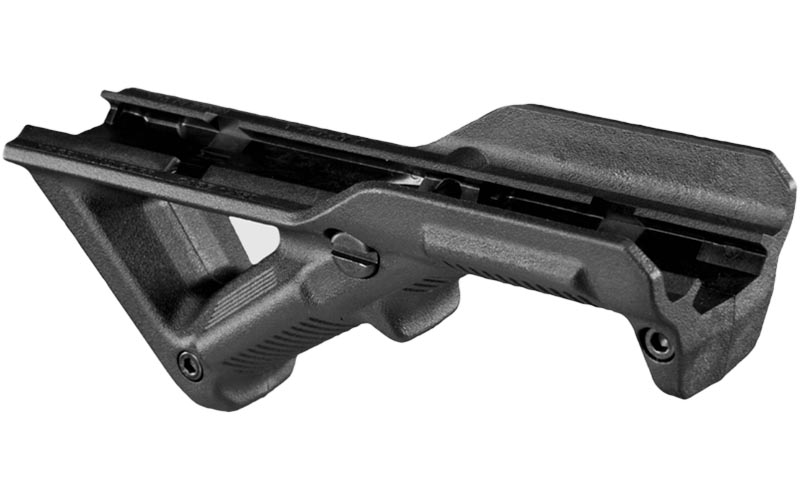
The Magpul Angled Forward Grip or AFG is one of the most common angled foregrips on the market. Made of durable molded polymer, it features fore and rear ridges to give your hand a little forward boundary, which some prefer in an angled grip.
There are three models available of varying sizes, two for 1913 Picatinny rails and one for M-LOK. Each is available in four different colors as well. MSRP: $26.95-$34.95 // magpul.com
Arisaka Defense Finger Stop
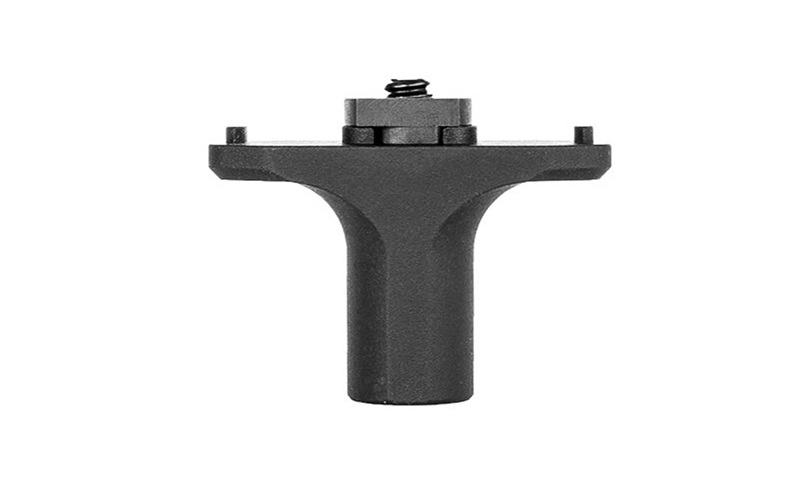
Arisaka Defense’s Finger Stop is offered in Picatinny, M-LOK and KeyMod variants, and the company has a few other styles available as well such as the Indexer. It's machined from aluminum and it can be used as either a finger stop (between the fingers of the support hand), a rear handstop or as a barricade stop. MSRP: $28 // arisakadefense.com
Bravo Company KAG
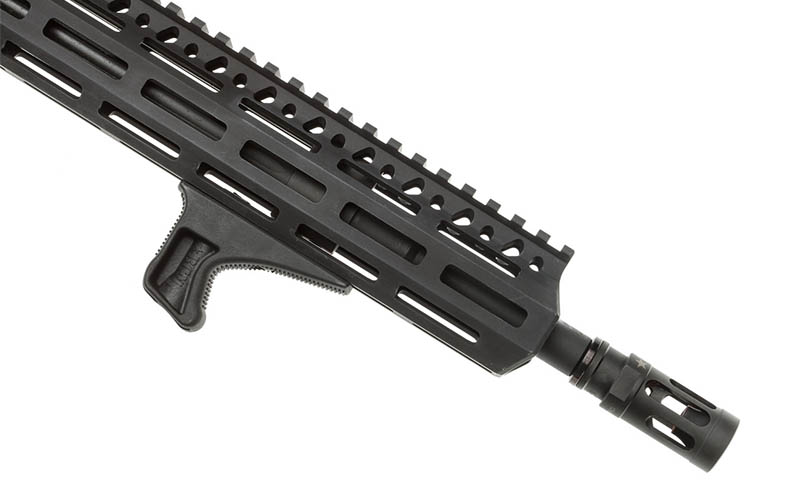
The Kinetic Angled Grip or KAG has long been a staple model of angled handstops. Between their durability and cost, it’s easy to see why.
The KAG has a vertical side and a curved side, and both are textured for additional grip. They are available for Pic rail, KeyMod and M-LOK handguards and are offered in several colors. It’s a good middle-ground size and its shape allows it to be used in a number of different ways, making it a versatile option. MSRP: $21 // bravocompanyusa.com
Knight's Armament Forward Pistol Grip
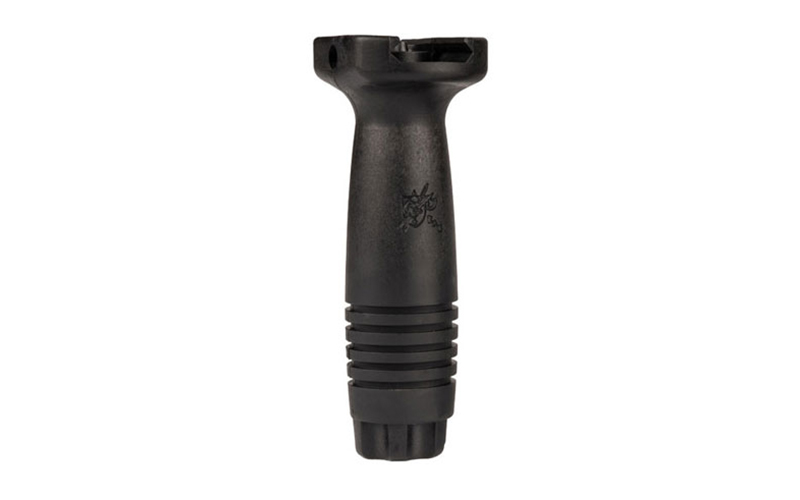
If you’re trying to clone a military AR, why not get the original M4 foregrip? It’s made of durable, injection-molded high-impact polymer and features a storage compartment that will fit an AA battery or two for your optic. The only potential downside is that these are only compatible with Picatinny rails, but at least quad-rail handguards look cool as hell.
They're available in black, OD green, and two shades (light and dark) of tan. However, it is Knight's Armament, so they don't come cheap. MSRP: Starts at $80 // knightarmco.com
NC Star Vertical Grip

For those who are more budget-minded, NC Star makes a decent clone of the Knight’s Armament Forward Pistol Grip that’s about eight times cheaper. Enough said. MSRP: Less than $10 // ncstar.com
Strike Industries AR-15 Bikini Handstop
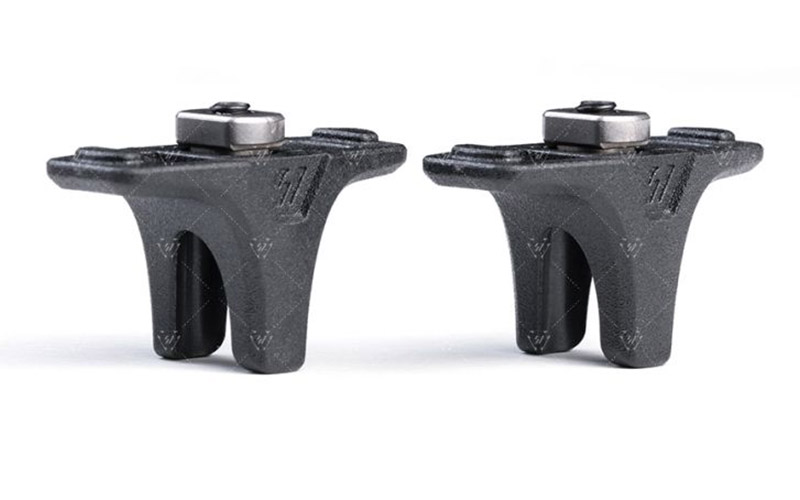
Strike Industries' Bikini Handstop is a two-pack of minimalist handstops, retailing for around $10. You can install one for a single low-profile polymer handstop, or both to keep the support hand in position. Low-cost, easy to install on any MLOK rail, and it works whether you use a pull or push technique with the rifle. MSRP: $12.95 // strikeindustries.com
Bravo Company BCM Vertical Grip Mod 3
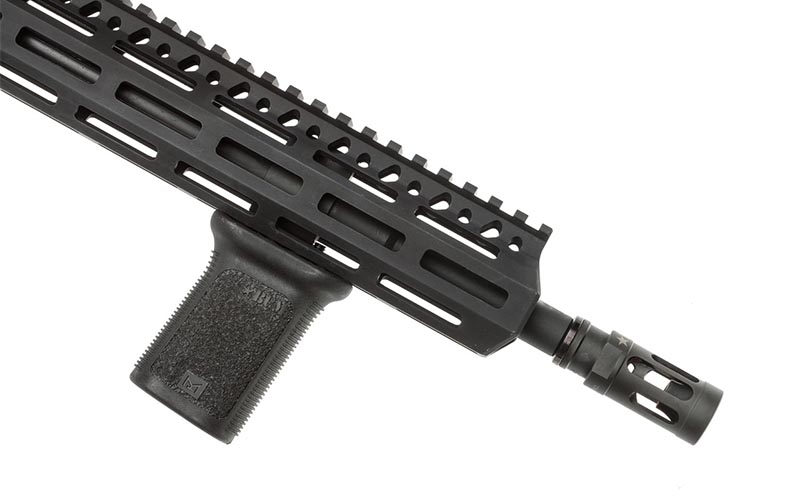
The BCM Gunfighter VCG has a slight curve on one side, allowing the user to have the front surface straight or curved, depending on preference.
BCM offers models that are compatible with either Picatinny, M-LOK or KeyMod and they are available in either black or FDE. A more expensive version with a storage compartment is sold as well. The stubby nature of this model makes it a solid, versatile choice since it can be utilized in more than one way. MSRP: $21 // bravocompanyusa.com
More AR Upgrades:
- Top AR-15 Accessories And Upgrades
- Four Quick And Dirty AR Upgrades
- Choosing The Best AR Accessories
- Prioritizing Spending On Your AR-15 Build

Next Step: Get your FREE Printable Target Pack
Enhance your shooting precision with our 62 MOA Targets, perfect for rifles and handguns. Crafted in collaboration with Storm Tactical for accuracy and versatility.
Subscribe to the Gun Digest email newsletter and get your downloadable target pack sent straight to your inbox. Stay updated with the latest firearms info in the industry.

![Best Concealed Carry Guns In 2025 [Field Tested] Wilson Combat EDC X9S 1](https://gundigest.com/wp-content/uploads/Wilson-Combat-EDC-X9S-1-324x160.jpg)


![Best 9mm Carbine: Affordable PCCs [Tested] Ruger Carbine Shooting](https://gundigest.com/wp-content/uploads/Ruger-Carbine-Shooting-100x70.jpg)
![Best AR-15: Top Options Available Today [Field Tested] Harrington and Richardson PSA XM177E2 feature](https://gundigest.com/wp-content/uploads/Harrington-and-Richardson-PSA-XM177E2-feature-100x70.jpg)

VFGs (and some hand stops) are also handy when you’re NOT shooting. Having that right angle off the handguard gives you a good grasping and carry point when just toting the weapon, and cupping the grip in your support hand while slung gives you more control and takes some weight off your shoulders. Also gives you more leverage when bringing the weapon to the ready. Plus, you know, a reliable index point for your support hand.